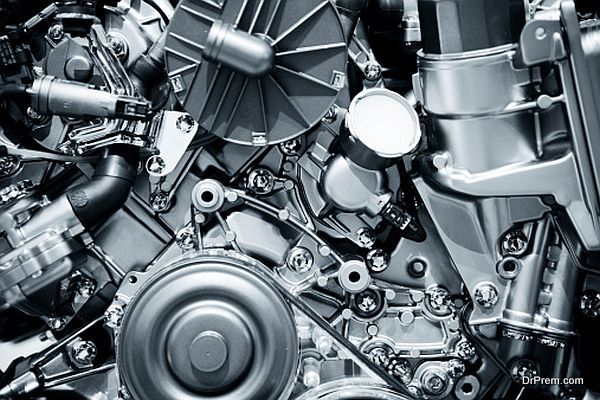A hundred years back, people got around riding horses or walking on foot. But with time, the modes of transport have also evolved. Wheels may be around for more than 5,000 years now, but the cars made their debut only in 1885. Moving around, thus, has become even simpler with the invention of automobiles.
Have you ever wondered what’s going on behind the hood of your car? If you lift the car hood, you’ll see a big puzzling heap of metals, wires, and tubes.They turn your car into an energy converter. The car engine converts the fuel, like diesel, gasoline, or electricity into energy, which in turn is converted into mechanical force that’s used to pull the wheels of the car. You can also call your car an internal combustion engine, since combustion happens internally.
How does a car engine work?

Almost all cars today make use of the four-stroke combustion cycle for converting gasoline into mechanical force. The four-stroke cycle was invented by Nikolaus Otto in the year 1867, and is also called the Otto cycle. The four strokes include:
- Intake strike
- Compression stroke
- Combustion stroke
- Exhaust stroke
Intake stroke: A mixture of air and fuel is pushed into the combustion chamber. An inlet valve, driven by the crankshaft, opens to let this mixture inside the chamber.
Compression stroke: The inlet valve closes. A piston compresses the air-fuel mixture inside the combustion chamber making it highly flammable. At this stage, a spark plug fires to initiate the combustion course.
Combustion stroke: A mini explosion is caused inside the chamber when the spark plug ignites the fuel mixture. It gives off hot gas that pushes the piston with heavy force. This energy released is now used to power the crankshaft.
Exhaust stroke: The exhaust gases are forced out of the outlet valve. This exhaust gas will pull the crankshaft making it turn.
The whole cycle gets repeated when the car engine starts running continuously. There must be a cylinder to power the crankshaft and avoid any loss of power. This is why a car engine makes use of 4 cylinders, so that one cylinder is always going through any one of the four stages for powering the crankshaft.
With the wide range of racing and domestic cars available today, the car engines have also upgraded to meet our speed needs. Today’s high power engines come in different types and designs, including Straight, W Type, Boxer, V Type, Electric, Hybrid and much more. The fixture of engines varies with the usage of cars like racing, domestic usage, and much more.
It’s time for self-driving cars

A robotic car, auto car, or a self-driving car is the latest advancement in cars, which is capable of performing all the functions like commuting, parking, and driving. It uses environment sensing technology and navigates its way without any interference from us.
Autonomous control means exceptional performance even under the worst uncertainties of the environment, traffic flow, and many other issues. Autonomous cars should be able to prevent accidents and compensate for any system failures by itself without external intervention. Its main aim is for you to simply sit back and enjoy the ride, while the car drives by itself to your destination.
So far only Google has developed a fully functional automatic car, but many high-end car makers like Audi, Nissan, Ford, Toyota, and Volkswagen, are also working on developing this driverless technology. Although some people might get nervous by the concept of a driverless car, the technology has gained a lot of positive response.
This technology has already been made available on a smaller scale in some of today’s vehicles that come fortified with blind-spot warnings, adaptive cruise control with stability systems, and self-parking assist. Thestates of Florida, Michigan, Nevada, and California have passed laws permitting autonomous cars on their roads. Accordingly, now many demanding automakers want to turn this dream into reality.
Article Submitted By Community Writer




